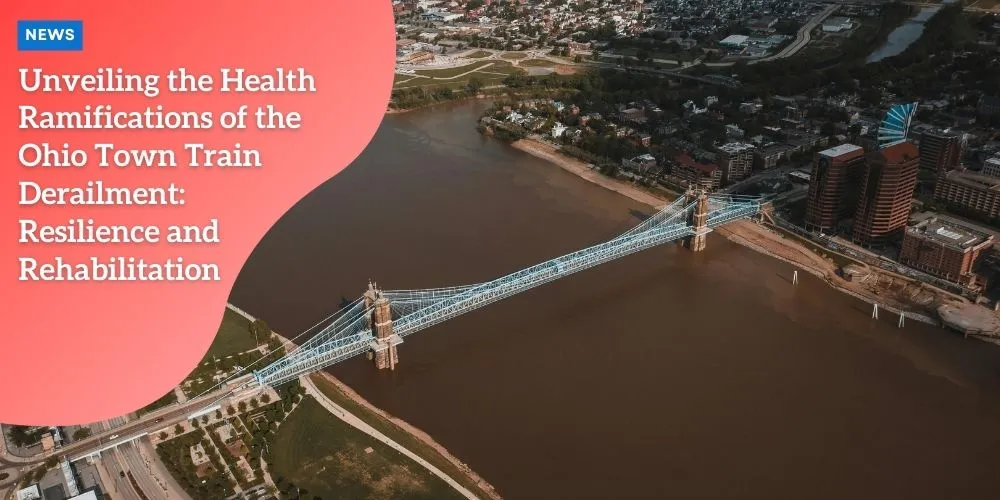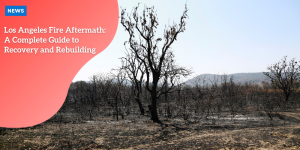Unveiling the Health Ramifications of the Ohio Town Train Derailment: Resilience and Rehabilitation

East Palestine Rebuilds: A Community Grapples with the Aftermath of a Train Derailment
The peaceful, close-knit town of East Palestine, Ohio, a place where many had put down deep roots, was abruptly transformed on February 3rd, 2023.
Anúncios
A Norfolk Southern freight train, carrying a hazardous mix of chemicals, derailed just outside the town, causing devastation and sending shockwaves through the community.
The derailment immediately raised serious concerns about the safety of residents, the environment, and the potential long-term consequences that could forever alter the course of life in this once-thriving town.
A Cocktail of Chemicals and a Community on Edge
The freight train was carrying multiple hazardous materials, including vinyl chloride, a highly flammable and carcinogenic compound.
Anúncios
Additionally, the train cars contained ethylene glycol monobutyl ether and butyl acrylate, both of which are toxic when inhaled or come into contact with skin.
The release of these chemicals posed a catastrophic risk to both human health and the surrounding environment.
In response to the immediate danger, emergency responders evacuated residents within a one-mile radius, fearing a potential explosion or the spread of toxic gases.
Anúncios
While the immediate threat was managed, the fears of lingering damage to the health of the community and the environment remained palpable.
Residents felt the weight of the incident not only through physical risks but also the growing anxiety surrounding the long-term impact of the chemicals on their lives.
The toxic chemicals left behind by the derailment were expected to persist in the environment, potentially contaminating air, soil, and water supplies.
The psychological toll was profound, as East Palestine’s residents grappled with the uncertainty of the future.
This wasn’t just a physical disaster; it was an emotional and mental one, too.
Health Concerns: A Present Danger and an Uncertain Future
In the immediate aftermath, a rising number of residents reported health problems such as headaches, dizziness, and difficulty breathing.
It became evident that the chemical exposure had already begun to affect the local population, raising alarms about the potential for long-term health issues.
Respiratory distress and other acute symptoms were just the beginning.
The bigger question that hung over the community was how these hazardous chemicals might affect residents in the years to come.
There were legitimate concerns about water and soil contamination, which could lead to chronic illnesses such as cancers, neurological disorders, and other debilitating health conditions.
The mental health impacts were equally concerning, with residents experiencing anxiety, depression, and trauma from the terrifying events and the uncertainty that lay ahead.
The derailment left East Palestine residents facing a grim future, with many unsure whether the town they once called home could ever truly return to normal.
The emotional toll went beyond health fears; there was a growing sense of betrayal.
Many in East Palestine began to feel that their safety had been compromised by negligent or inadequate practices in the transportation of hazardous materials.
This lack of trust in the companies and agencies responsible for safety protocols deepened the emotional scars left by the derailment.
A Community Divided: Health Concerns and Displaced Trust
The health impacts weren’t limited to the physical.
The derailment shattered the sense of community that had defined East Palestine.
Residents once bound together by shared experiences and a sense of pride in their town were now divided by fear and uncertainty.
Reports of respiratory issues, skin rashes, and persistent headaches further isolated neighbors, as some chose to relocate, unwilling to wait for assurances that their health would not continue to be at risk.
This division made it harder for the community to recover and move forward.
The trauma was compounded by a loss of trust in local and federal authorities.
Government officials and the companies responsible for the train’s operation had promised swift action, but many in East Palestine felt that the response was inadequate.
People were skeptical that the promises made would be fulfilled, given the scope of the disaster and the complicated logistics involved in a full recovery.
The trauma had fractured East Palestine’s tight-knit social fabric, leaving many residents questioning whether their town would ever feel safe again.
Fear of the unknown, coupled with rising tension between residents, business owners, and local government, made the process of rebuilding seem more daunting than ever.
Living in Uncertainty: Ongoing Health Issues and Unanswered Questions
Even as the situation on the ground stabilized, residents found themselves living in an environment where uncertainty became a daily companion.
Health problems persisted long after the immediate aftermath of the derailment.
Many people continued to report symptoms of exposure to the toxic chemicals, including severe headaches, coughing, dizziness, and difficulty breathing.
Even though the Environmental Protection Agency (EPA) carried out extensive testing to assess environmental safety and air quality, skepticism persisted among the residents.
The ongoing questions about the long-term health effects of chemical exposure left many East Palestine residents feeling vulnerable and afraid.
The lack of clear answers only exacerbated their fears.
For some, it wasn’t just the physical discomfort of symptoms but the emotional burden of knowing that they were exposed to substances whose effects might not show up for years.
Further complicating the issue was the possibility that other hazardous materials had been released into the environment that had yet to be fully identified.
Without a full understanding of the extent of the contamination, the residents of East Palestine were forced to cope with a never-ending sense of unease about the air they breathed, the water they drank, and the soil in which they planted their crops.
Responding to the Crisis: Authorities Take Action
Following the derailment, multiple agencies, including the EPA and Norfolk Southern, the train operator, were called upon to address the community’s concerns.
The EPA took the lead in environmental testing and cleanup, focusing on the monitoring of air and water quality.
Norfolk Southern, under public pressure, took steps to support the community through financial compensation, infrastructure repairs, and community programs designed to foster recovery.
Despite these efforts, there was no consensus about whether the measures taken were sufficient.
Many residents felt that Norfolk Southern’s efforts were primarily motivated by public relations concerns and that the company had been slow to address the true extent of the damage.
The lack of transparency surrounding the full scope of the incident contributed to a sense of distrust.
Still, the corporation’s financial contributions toward local infrastructure improvements and new community programs were a sign that the company was attempting to rebuild the town’s physical and economic structures, even if the emotional and health toll was more complicated to address.
Resilience in the Face of Adversity: Rebuilding East Palestine
East Palestine demonstrated incredible resilience in the wake of the disaster.
While residents continued to live in the shadow of the train derailment, they began to show remarkable strength through their commitment to rebuilding.
Local businesses received support from both the government and nonprofit organizations, with efforts focused on economic revival and providing much-needed resources to those displaced or affected by the derailment.
New health clinics were established to care for residents suffering from health problems, and independent medical monitoring programs were launched to track the long-term health outcomes of those exposed to toxic chemicals.
While progress was being made, doubts about long-term safety remained.
Many residents, particularly those who had been directly impacted by the derailment, were unwilling to take chances with their health.
The emotional scars left by the incident would take much longer to heal, even if the physical damage to the environment and economy began to be addressed.
The Road to Recovery: Building a Sustainable Future
The road to recovery for East Palestine would be long, but there was hope.
With sustained efforts to improve environmental safety, restore public trust, and support the community, the town could eventually rebuild itself.
Continued investments in the local economy, healthcare infrastructure, and environmental remediation would be key to ensuring that the town’s future was sustainable and secure.
The tragedy in East Palestine also served as a reminder of the importance of robust safety protocols when transporting hazardous materials.
It highlighted the need for more effective emergency response plans and greater transparency in communication between residents, local authorities, and the corporations involved.
If East Palestine is to emerge stronger, it will require a collective effort, not only from those who live there but from all those who have a stake in the town’s future, including policymakers, businesses, and environmental groups.
Looking Forward: Building a More Resilient East Palestine
The derailment of February 2023 serves as a stark lesson in the risks associated with hazardous materials transportation, but it also presents an opportunity.
It’s a chance to rethink safety protocols, disaster response strategies, and the role of communities in shaping their own futures.
If East Palestine is to rebuild and move forward, it will need to do so with a focus on long-term resilience.
This means investing not just in physical infrastructure but also in the health and well-being of its residents.
A sustainable recovery is not just about fixing what was broken; it’s about building something better and more robust.
With the right approach to community engagement, environmental stewardship, and economic development, East Palestine can emerge from this crisis stronger than ever.
The resilience of its people, coupled with decisive action from all stakeholders, will determine whether the town can turn the page and write a new chapter of recovery, hope, and renewal.





